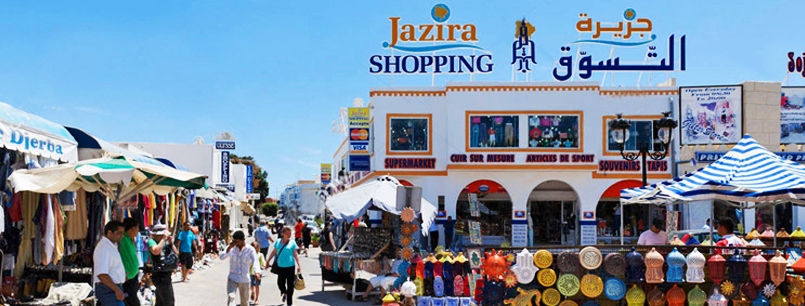TUNIS
The capital of Tunisia is made up of the Medina (its historic heart), the ‘European’ quarter built at the beginning of the 20th century, and the new modern suburbs.
For more than 500 years the Medina has been the historic heart of Tunis, and UNESCO has classed as a World Heritage Site its fascinating and exotic maze of streets. The Zitouna Mosque reigns supreme and there are little museums tucked away down interesting alleys. Here too, artisans ply their trade – silversmiths, goldsmiths, hat makers, to name but a few.
Avenue Habib Bourguiba is the main artery running west to east, a bustling wide boulevard with cinemas, restaurants, cafés, and shops, with the main entrance to the Medina at one end and the TGM metro line to Carthage and Sidi Bou Said at the other.
Housed in the north of Tunis and originally a 13th century palace, the Bardo Museum has been extended and restored over the centuries and is an amazing example of 17th and 18th century Arab-Muslim architecture. It houses exhibits from the prehistoric, Punic, Roman, Christian and Muslim eras and, of course, its world class collection of Roman mosaics.
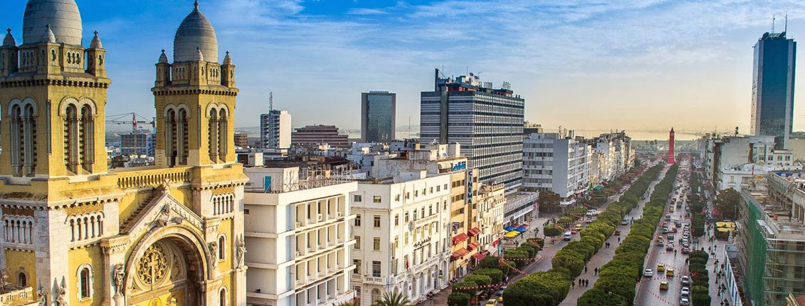
HAMMAMET & YASMINE HAMMAMET
Hammamet is clearly among North Africa's finest beach resorts. Here the fine beaches turn the right way, to the south, allowing you to sunbathe and watch the sea at the same time.
In the centre of town, the old Medina, with its narrow alleys, is still largely residential but there are plenty of souvenir and handicraft shops, as well as a 15th century Spanish fort offering superb views from its ramparts.
Take a mint tea or a coffee at the Sidi bou Hadid café at the foot of the fort and drink in the beauty of Hammamet Bay. Hammamet is home to the International Cultural Centre which in summer brings music and dance from around the world. Set in the green and peaceful grounds is Sebastien’s Villa, an architectural gem built in the 1920’s by the Romanian architect Georges Sebastian, and much visited and admired. Stroll around the grounds or take a coffee beside the colonnaded pool.
Yasmine Hammamet, newly created resort at the southern end of the Bay, has a lovely hotel lined esplanade, a magnificent 700 berth marina and a re-created Medina (the Medina Mediterranea) with shops, cafés, restaurants and a casino. Beside it is the Carthageland Theme Park.
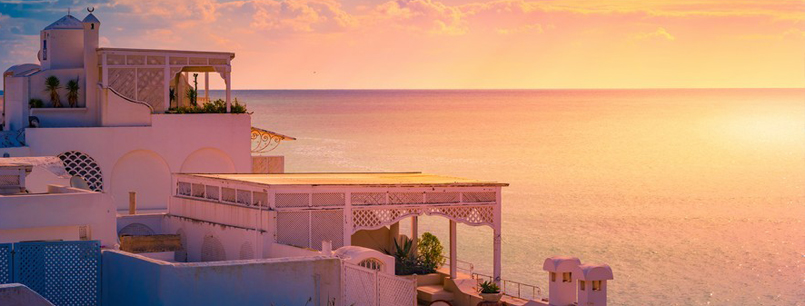
Sousse
Nicknamed “The Pearl of The Sahel”, Sousse is a popular beach resort as well as an historic city. It is a busy and bustling town with a large port. At its heart is the Medina, with its high ramparts evoking the town’s medieval past as a centre for Islam and a stronghold protecting the coast against the Christian invasion.
Within the Medina you will find the 9th century Ribat, built to help defend the coast and the 11th century Great Mosque whose crenulated battlements and large circular corner towers make it look more like a fortress. Indeed, it probably started out as a Kasbah to defend the internal port. The warren of alleyways in the souk makes it a fascinating place to explore and shop.
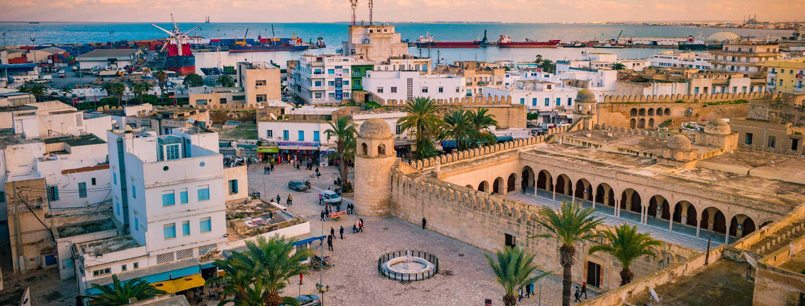
Port El Kantaoui
Built in the 1970’s, Port El Kantaoui is known as the Mediterranean’s first ‘garden port’ and is located just a few kilometres north of Sousse. Its architecture is an inspiration from the Arab-Andalusian style and the resort is a homogeneous, verdant complex of hotels, residences, shops and leisure spots, the centre of which is the 340 berth marina complemented by a superb golf course and a lovely central piazza with a musical fountain.
This is a popular resort with hotels stretching along its sandy beaches, plenty of activities and just a short distance from Sousse.
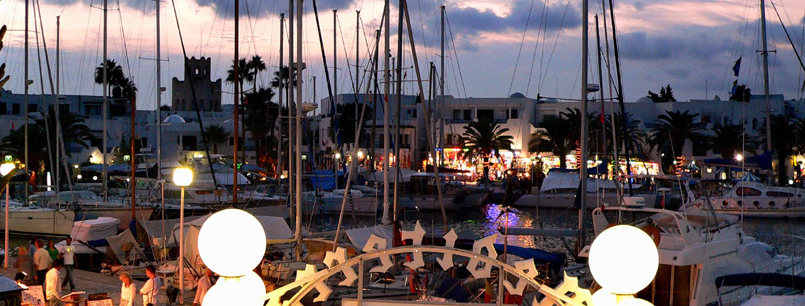
Mahdia
Lying less than an hour south of Sousse, Madia is both a modern tourist resort, with some of Tunisia’s most beautiful beaches, and a particularly active fishing harbour. Mahdia was also important historically, originally to the Phoenicians and Romans and later to the Fatimids, and has several monuments recalling its prestigious past.
On the peninsula, the ancient Medina, home to Tunisia’s finest lace weavers, is an ideal place for a relaxing stroll. The Skifa el Kahla is a small fort originally built in the 10th century and rebuilt in the 16th century, now acting as a gateway separating the modern town from the peninsula. The highest terrace offers a magnificent panorama of the whole town, from harbour to coast.
There is an extensive maritime cemetery on the tip of the peninsula with graves laid out so that they all have sea views. The port is home to a large fleet of lamplight fishing trawlers and boats and is very lively in the summer when the night fishing season for sardines starts.
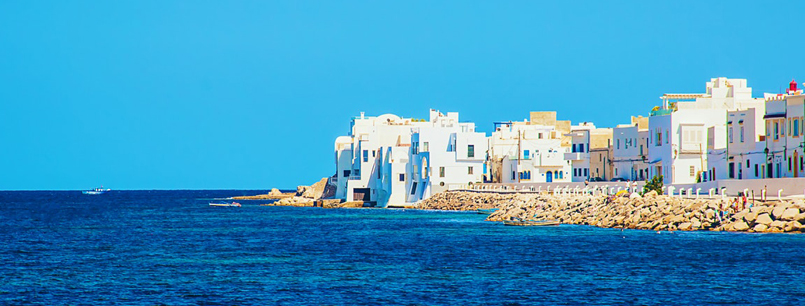
Kairouan
On the central plain of Tunisia is the holy city of Kairouan, Capital of the Muslim Maghreb, and one of the most important places for Muslims. The Medina of Kairouan is home to some impressive monuments. Dominating the Medina is the Great Mosque, known as ‘Jamaa Oqba’, founded in 670 by Oqba Ibn Nafaa. Here you will also find the Sidi Sahib Mausoleum with its magnificent ceramics. The souks are in the heart of the Medina, a fascinating labyrinth of shops including, of course, carpet shops. Kairouan is the main carpet-making centre in Tunisia. The Kasbah, a citadel dating from the 18th century, has now been transformed into a five star hotel.
On the edge of the town centre are The Aghlabid Pools – four of the original fourteen have been restored. These were the city’s waterworks – an amazing feat of Arab engineering to bring water to the town over 1000 years ago.
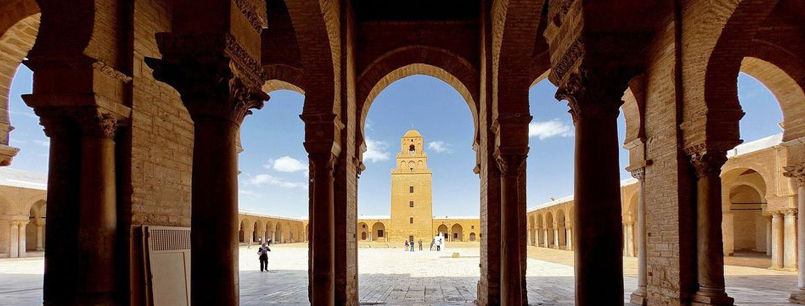
Sfax
The city, founded in AD 849 on the ruins of the ancient towns Taparura and Thaenae, is the capital of the governorate of Sfax and a thriving, bustling port. It is Tunisia’s second city, after the capital Tunis. It is also home to a sizeable fishing fleet and fish canneries.
ts Medina is still very much part of daily life and a great deal of the economic life of the city is carried out here. Its walls date from the 9th century with the great mosque dating from the 10th century.
Sfax is particularly well served by transport networks – road, rail and air as it has its own airport. There is also a daily ferry to the Kerkennah island of Chergui.
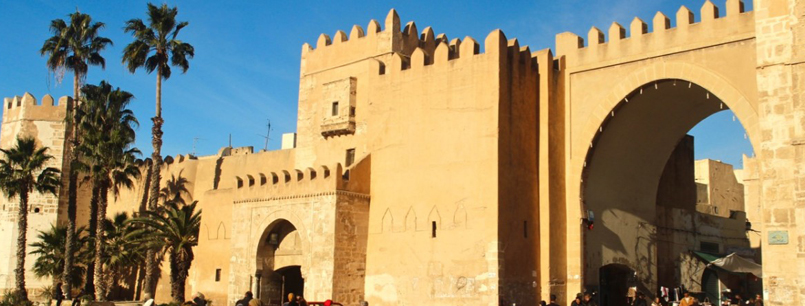
Tozeur
With hundreds of thousands of palm trees, Tozeur, in the South West of Tunisia, is known as the ‘Pearl of the Jerid’ (‘jerid’ meaning the leaf of the palm tree). The town is situated on the edge of the huge Chott El Jerid salt lake and is the commercial centre of the region, as indeed it has been since pre-Roman times. It is famous for its ‘deglet nour’ (‘finger of light’) dates which are its main export.
The old quarter of the town (14th century) is called Ouled el Hadef and here you will find the traditional architecture of the region – high, practically windowless walls built with small yellow/brown handmade bricks, with geometric patterns in relief. It is a fascinating area to wander round, with little gems to discover, like the Museum of Popular Arts and Traditions.
On the edge of the oasis is the Dar Cheraiet complex housing the Dar Cheraiet Hotel, a Museum, an Arabian Nights grotto, a restaurant and a café. The town hosts the annual Festival of the Oasis, held in the winter, which has grown over the years to become an international event of traditional culture, music, dance and poetry.
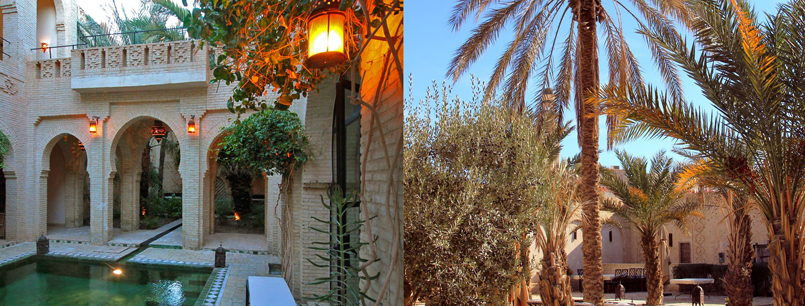
Houmt Souk, Djerba
Houmt Souk is the delightful capital of the lovely island of Djerba, set in the Gulf of Gabes in the south Tunisia. Djerba is believed to be the home of the mythical ‘lotus eaters’ and has a style and character all of its own.
The town is centred around the beautiful and lively markets. There are two, one vaulted souk, and another for foodstuffs. The small and colourful souk ends in a couple of squares that are filled with outdoor cafés. On the seafront is the fort Borju l-Kabir which is well worth the walk down from the town centre.
